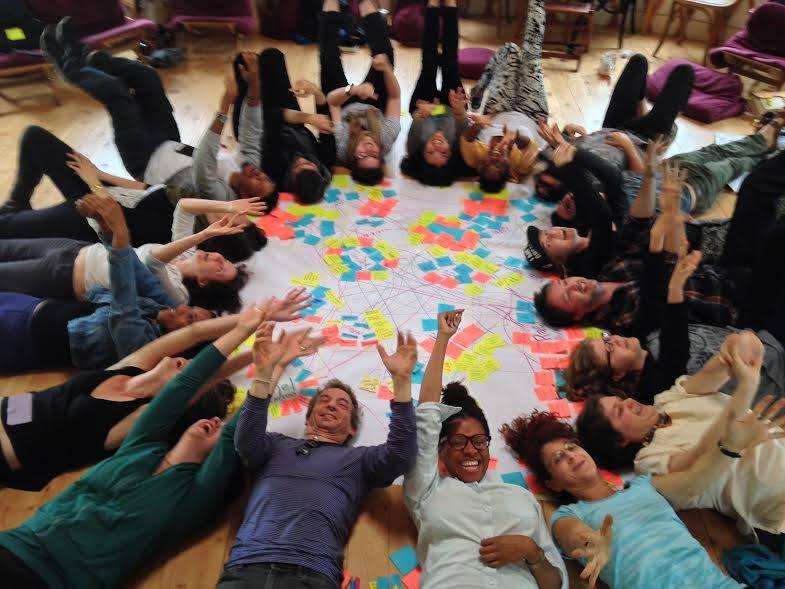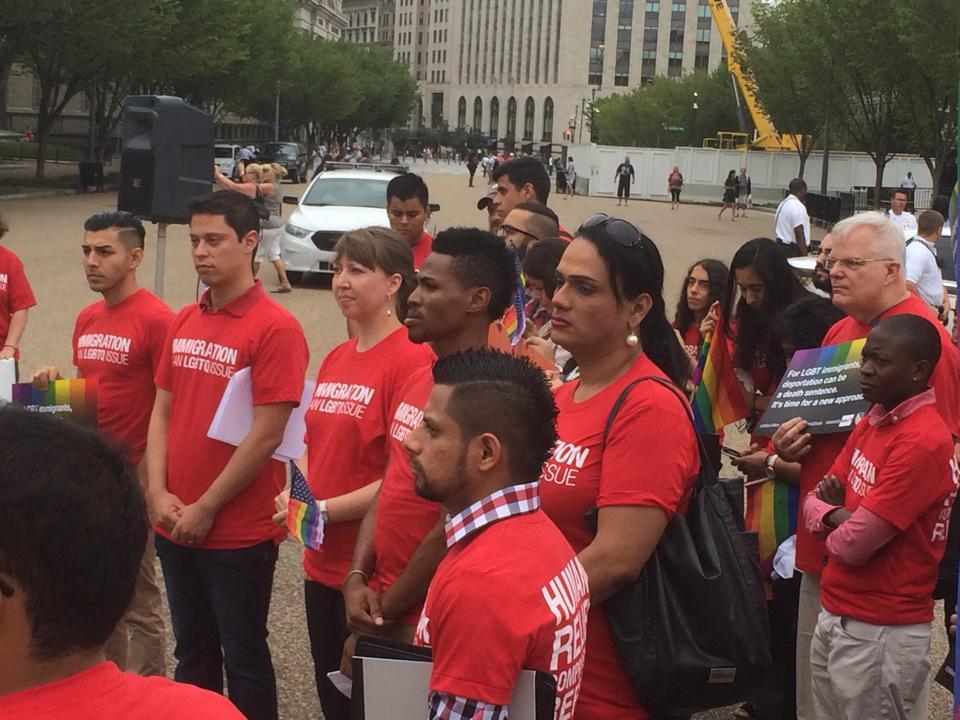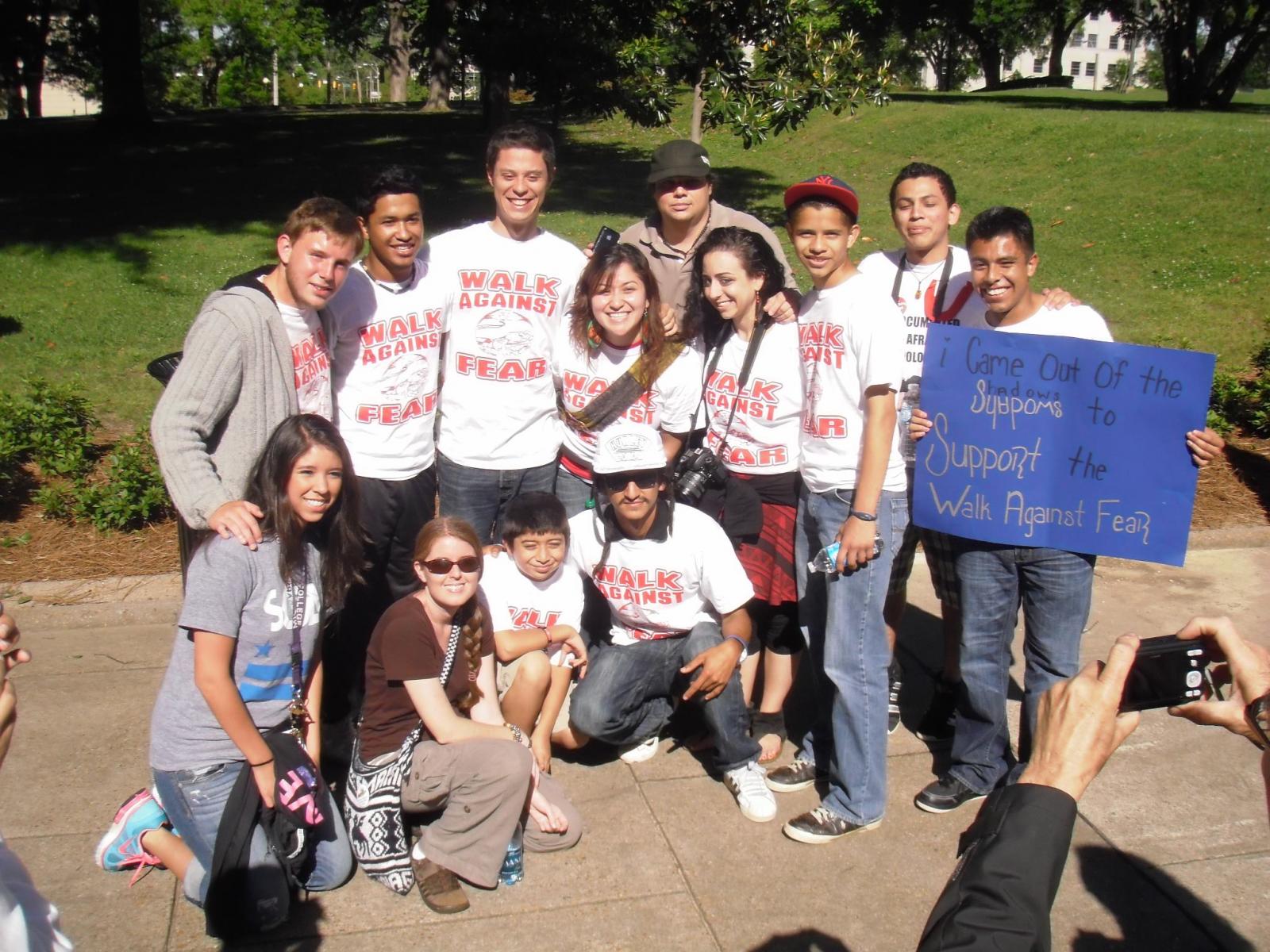
How Technologists Can Support Non-Profit Organizations
Small progressive organizations, working alongside social movements, can have a huge impact in the world. These non-profits often organize to empower those most impacted by the socio-economic issues of our time, and to solve some of today’s most pressing problems, such as poverty, corruption, money in politics, environmental degradation, inhumane immigration policies, police brutality, warfare, and LGBTQ discrimination. What does it mean to leverage technological solutions to support grassroots non-profit goals?
For most of our careers, the two of us have had the honor of working with non-profits at the grassroot level, ranging from Florida Immigrant Rights Coalition, Presente.org, United We Dream to GetEQUAL and CODEPINK Women for Peace, most of which were small and scrappy at the time. As Thoughtworkers, we now engage with technologists to help these types of organizations amplify their voice online, better utilize available tech tools, and innovate new technology to benefit social movements. Having worked on both sides of the technologist-activist relationship, we have some guiding principles to share with technologists who are trying to make an impact by serving a grassroots group.

Activists at a Beautiful Trouble training that Rae co-organized, circle up around a pile of post-its after mapping movement allies and challenges - June 2015
Creatively Stretch Each Dollar and Every Minute
Small non-profits commonly have very limited budgets. Why are budgets so small? It’s typically difficult to find funding for social change initiatives that go beyond charity, approach change at a systemic level, and address topics that are considered to be politically controversial. Fundraising can become an all-consuming job, as organizations often compete for the same small pool of funds from a small set of individual donors or foundations. Government money is rarely available for such causes, and usually comes with even more strings attached than foundation or individual grants.
This means that organizations have to stretch every dollar to fulfill their programs and movement goals. We learned quickly that to get to necessary networking opportunities and movement-building moments, we had to apply for conference travel and lodging scholarships, raise funds from allies and friends, and be dogged in navigating rideshares and finding couches to surf on.
A non-profit staffer is typically doing the work of three people. Fueled by a passion to see real change and achieve justice, they work long hours for little pay or recognition. Every job we’ve taken in the non-profit sector, required us to work long hours, extending into nights and weekends, and to take on administrative and fundraising responsibilities, in addition to fulfilling campaign goals and maintaining community relationships.
During our time working in the non-profit sector, we’ve felt as if we were dancing to a delicate song with very difficult steps. It wasn’t enough to pass laws and create policy reform. We also wanted to cultivate leadership from people in communities hit hardest by the issues we were trying to solve. And we sought to build a network to stretch our imaginations toward a bold, shared vision for the future, beyond a single campaign or policy solution. All this had to be done on a dime. Sometimes it felt impossible to balance the goals and the budget, but we quickly learned to be creative, make the most of our resources, and make every minute matter. Given such limited financial resources, it’s remarkable how much organizations, working in conjunction with social movements, can achieve.
Working for non-profits can be extremely frustrating, but it is also rewarding to know that movements are built by people willing to lend their skills and time. Although financial constraints will likely exist, they can be overcome by creativity and perseverance.

GetEQUAL leaders outside of US Supreme Court hearing about the constitutionality of the Defense of Marriage Act (DOMA)- May 2013
Be Humble and Respectful: Remember the Client is the Expert
The staff of grassroots organizations are very passionate and committed to their beliefs. Many of them have chosen to earn less money by taking on non-profit work, in order to stay true to their personal, movement, and organizational goals. Some leaders in grassroots organizations are working-class people, and need to make ends meet by working long hours, yet they make the time to protest, show up for meetings, etc. Small details, like being mindful of the place you meet to work on a project together, can be important.

Press conference led by Immigration Equality outside of the White House demanding the end of immigration detention of LGBTQ immigrants - June 2015
Never forget that non-profit clients are experts on the issues they work on and it’s best to approach them with humility and listen carefully to their needs. Bring rigor and disruptive thinking to non-profit clients and help them think outside the box. But challenging your clients in this way should never be coupled with a sense that you know more than they do about the problems they’re facing. There is a dirty legacy of charity work, whereby technologists have imposed foreign ideas, apps, and ways of working, onto communities they perceived needed help, without learning from the community. Instead, we can work in solidarity, actively and courageously working with, rather than for, these communities, and continuing to work toward dismantling any pre-conceived notions, such as racism, classism, sexism, xenophobia, to name a few.
Our job is to come together with organizations to co-create solutions that will include technology. Technologists can play an important role in social struggles. By understanding the field that activists operate in, they can build tools to amplify the voice of organizations to win.
Avoid Reinventing the Wheel: Use Technology to Enable the Solution
“Our organization would like to create an entirely new platform, something like Facebook, so our members can connect and organize together. We want it to be mobile-ready and go viral”, said an executive director. “Okay, great, we can have that ready for you by next week”, said no technologist ever. (Or at least, not one we’d want to work with!) Does this scenario sound familiar?
Imagine fulfilling this tall order. The organization will shoulder a huge and likely unexpected burden in trying to build this online community from scratch. And the question of who will maintain the software over time is no small problem. Creating custom software or a website that will require a high level of technical experience to maintain, will likely not be sustainable for small non-profit clients. If the tech solution requires a complete revamping of the client’s system or necessitates hiring a new developer, and the organization doesn’t have the funding needed to execute the scale of the proposal, the project will likely be a waste of everyone's time — and will fail. It’s not enough to create a tech solution for the problem, if the organization simply doesn’t have the capacity to implement it.
Even if the organization has the funding, its leaders may prefer to use the money for campaign and advocacy projects, rather than investing in the tools behind the action. Amid the everyday challenges of fighting against oppression and violence, it can be hard to see the long-term benefits of investing time in organizing tools. Sharing case studies from past projects at the inception meetings with the non-profit client can help build the case for the value of committing staff time and resources to the technology project.
Capacity goes beyond funding in other crucial ways. Some grassroots organizations lack advanced tech experience and the know-how, and won’t be able to use a cutting-edge solution. Staff may have tech experience and will assume their volunteers and membership base do, too. This is a grave assumption that we’ve seen many times. For example, staff start a text loop or launch a new app when, in fact, their base doesn't use these tools.
With sparse funding, volunteers shoulder a lot of the work. They may be exhausted and have very limited capacity to take on only a few tasks. Additionally, access to technology and knowledge of how the latest tech works may vary greatly across volunteers and staff. With such limited bandwidth, there can be resistance to integrating an entirely new platform or tool, on top of keeping up with day-to-day activities.
There may also be generational gaps in knowledge or cultural relevance with respect to technology. It’s not enough for an organization to want to be relevant to the next generation of young people, they must actively engage those youth in their core leadership, be willing to go where young people are, and hear their ideas respectfully. Just having a shiny new app or starting a Vine account won’t necessarily draw young people to participate in an organization.
An organization might desire a sophisticated piece of tech, but may be unclear how this tech fits into their overall mission and campaign strategy. It's our job as technologists to help organizations decipher whether they want a shiny new tool, or to integrate an effective online strategy with their offline toolbox toward winning their campaign goals.
Sometimes necessity is the mother of (non)invention, pushing us to weave together existing technologies to find a utilitarian and affordable solution.
Last day of the Walk against Fear in Jackson, Mississippi, a walk organized by undocumented youth to end separation of families through deportations - February 2011
Disclaimer: The statements and opinions expressed in this article are those of the author(s) and do not necessarily reflect the positions of Thoughtworks.














